Adobe Creative Cloud Reviews & Product Details
Adobe Learning Manager is a cloud-based learning management system (LMS) that creates personalized learning experiences at scale for customers, partners, and employees alike. It uses a headless learning platform that allows for integrations with Experience Manager Sites or any other CMS through open APIs.


| Capabilities |
|
|---|---|
| Segment |
|
| Deployment | Cloud / SaaS / Web-Based, Desktop Mac, Desktop Windows, Mobile Android, Mobile iPad, Mobile iPhone |
| Support | 24/7 (Live rep), Chat, Email/Help Desk, FAQs/Forum, Knowledge Base, Phone Support |
| Training | Documentation |
| Languages | English |

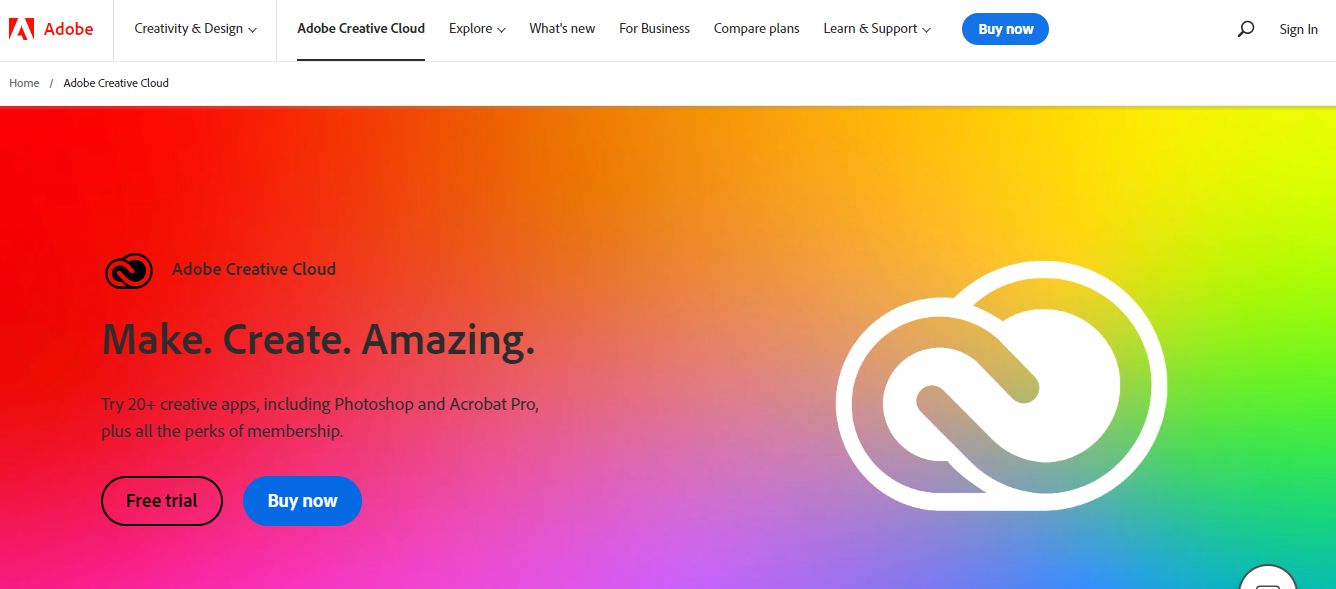
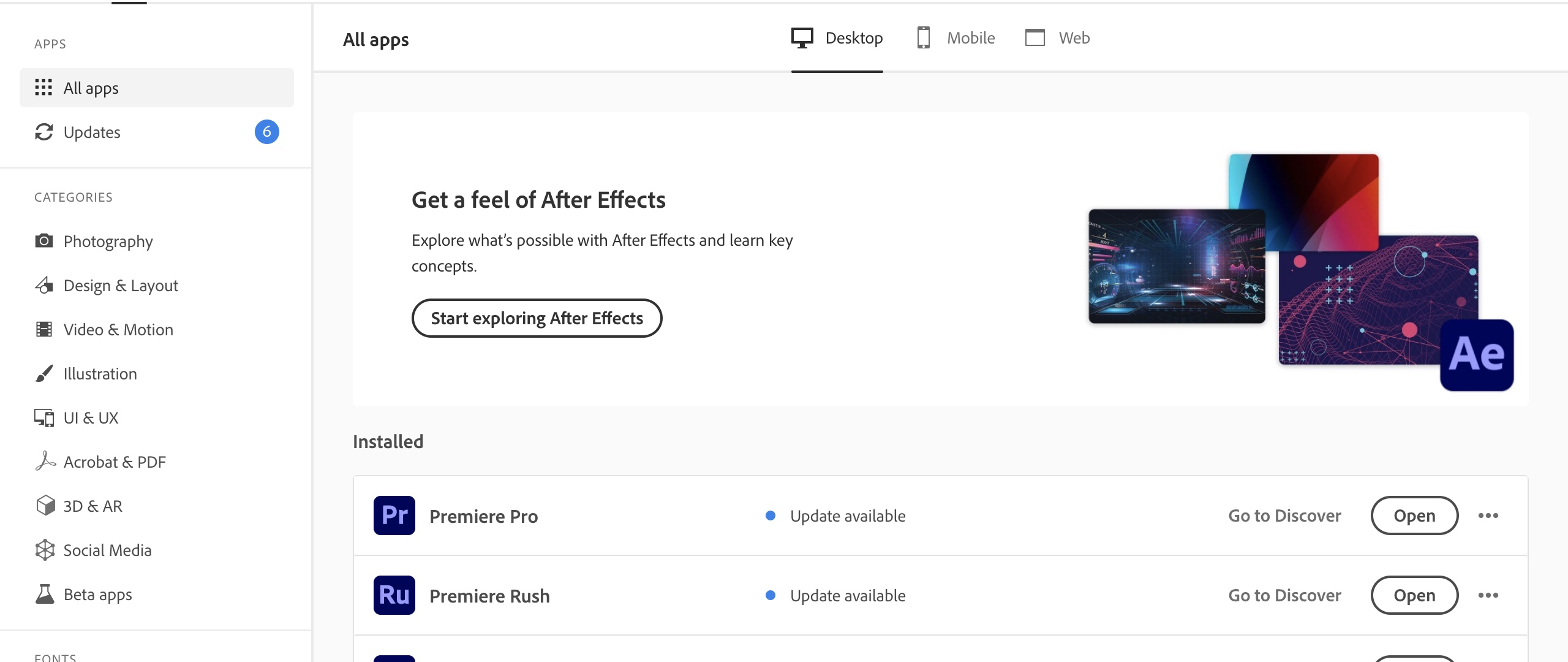
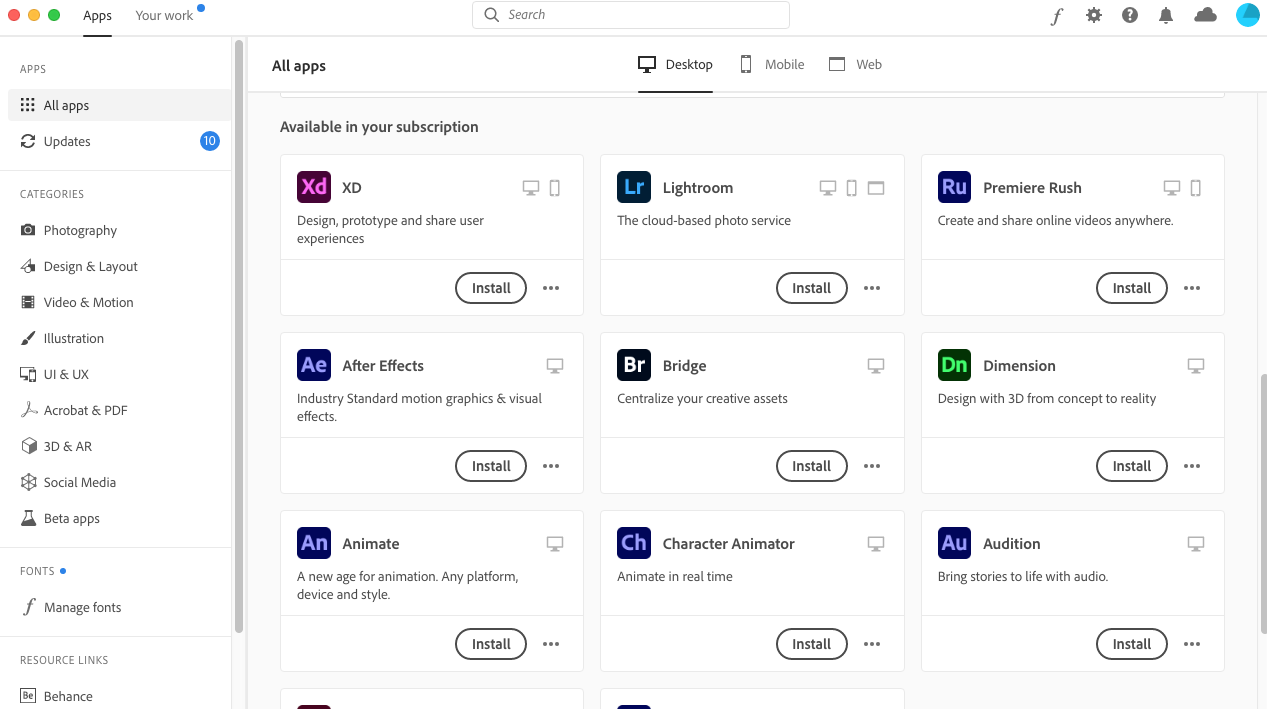
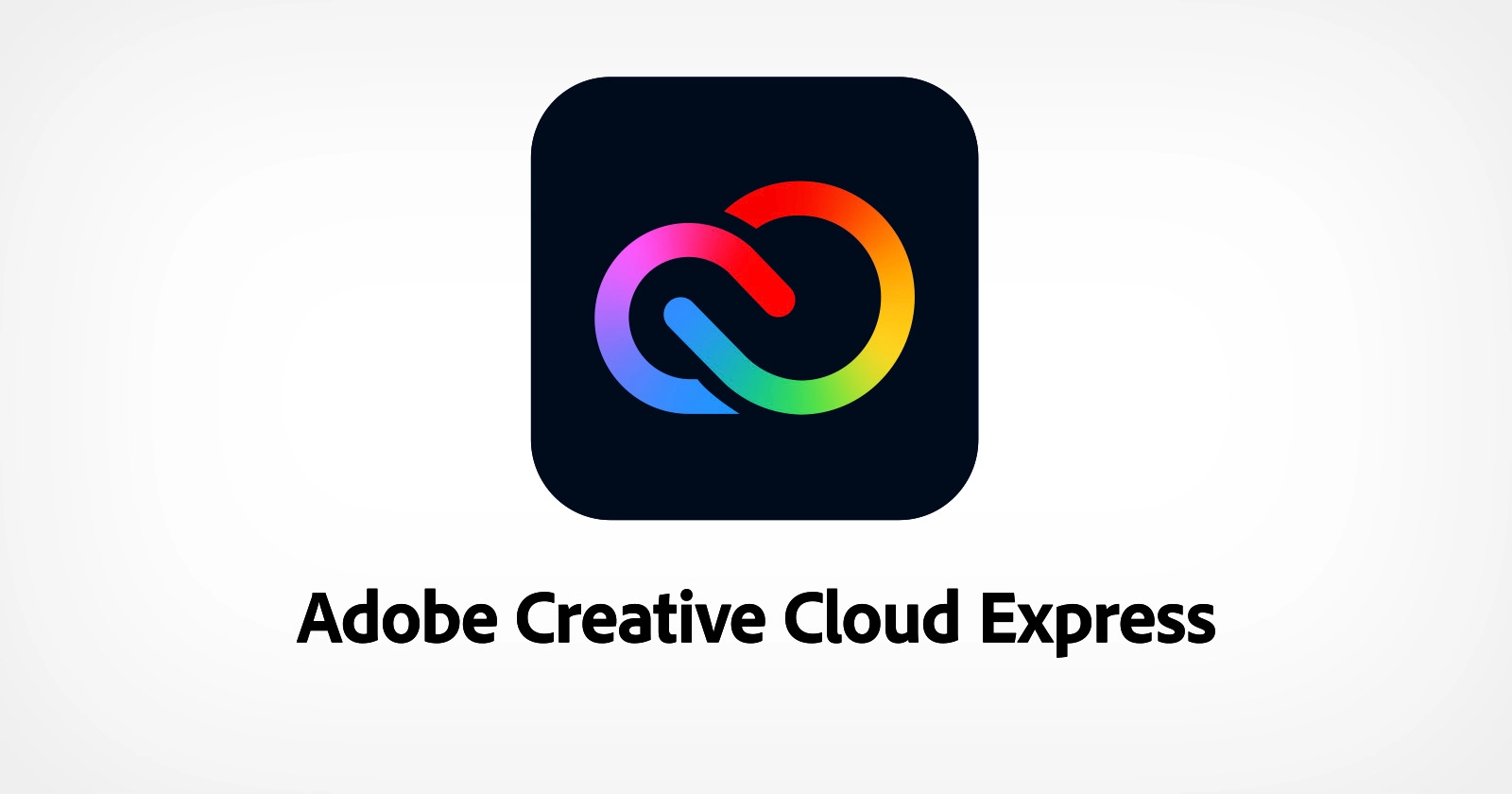

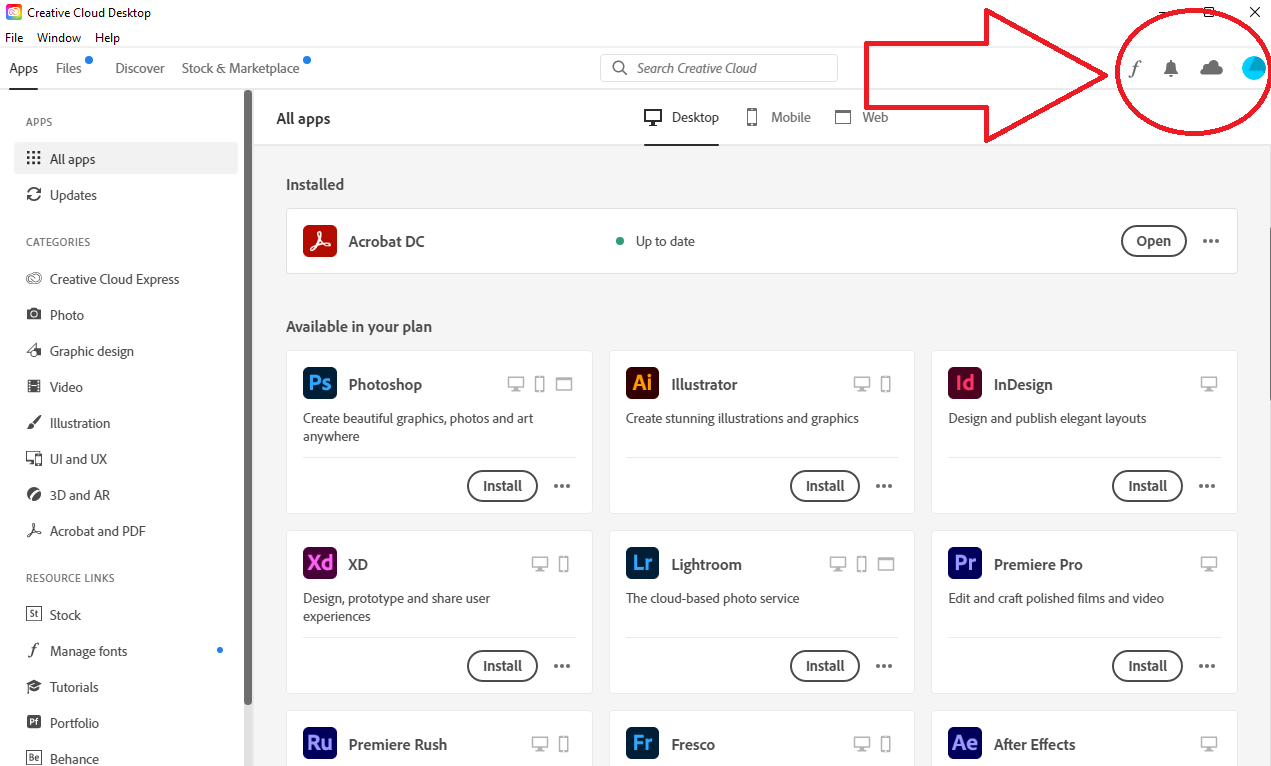

Adobe Illustrator is a top platform for creating illustrations and drawings. The features are top notch and it is simple to create beautiful designs. The learning process is relatively easy.
In order to use Adobe Illustrator, a monthly subscription is needed. The Adobe creative suite used to be a one time purchase not a monthly subscription. I preferred the old option to purchase it once rather than having to pay monthly in order to use the software.
Adobe Illustrator enables the user to create the perfect design or illustration for design work.
I love every one of the various capabilities that Photoshop considers you to modify, correct, or utilize your creative mind to make beautiful photographs. The point of interaction is not difficult to use, and I'm happy it is the same as the other Adobe programs, which makes it simpler to learn and utilize. I love utilizing alternate ways to make me lightning quick and to get to apparatuses that I want much of the time rapidly.
A few capabilities move areas between Adobe programs, which is irritating; I wish Photoshop had a similar stroke and position devices to InDesign.
I'm ready to address and modify photos rapidly. I find this program in blend with other adobe programs (indesign, artist, and lightroom) make my occupation such a ton quicker and more straightforward. The conceivable outcomes that this product offers is overpowering however positively. I feel like I can constantly be learning new things it can do and open up additional potential outcomes with my craft and work.
Professionals in the creative business frequently utilize the decades-old, highly effective image altering program Adobe Photoshop. The ability to edit photos in a variety of ways, from simple chores like cropping and resizing to more complex ones like retouching, compositing, and producing digital art, is one of Photoshop's most well-liked capabilities. In order to assist users in achieving their intended outcomes, Photoshop also provides a large selection of tools and settings. For instance, there are numerous selection tools that let users to isolate particular regions of an image, and layers that enable non-destructive editing and simple adjusting of various image components. The considerable support that Photoshop offers for third-party software is another benefit.
Photoshop is frequently criticized for being overly complicated and intimidating, especially for new users. It might be challenging for consumers to know where to start or to comprehend how to use all the features properly due to the enormous amount of tools and options offered. The software can also be very resource-intensive, so it might need a powerful computer to function well, especially when dealing with big files or complicated projects. Users working on outdated machines or without access to high-end hardware may find this difficult. The price of Adobe Photoshop may also be a problem for some customers. Adobe does provide a free version of the program for testing purposes, however the complete version costs
From simple jobs like picture scaling and cropping to more difficult ones like combining several photos, making digital graphics, and photo retouching, Adobe Photoshop solves a variety of image editing and design difficulties. Photoshop enables users to rapidly and effectively achieve their desired effects by offering a variety of tools and possibilities. The ability to produce high-quality visual content for a variety of purposes, from marketing materials and advertising campaigns to digital art and graphic design, is one of Adobe Photoshop's key advantages. This information can be used to advertise businesses, spread concepts and ideas, or just for personal expression. Additionally, Photoshop enables users to edit visuals and images in previously impossible or challenging ways.
It may not be as easy to use at first, but it is helpful in producing images used in the real world.
So far, there is nothing wrong with it. However, it is a specific program, not for artists.
This software is beneficial for someone who wants to create business cards, logos or art for animation. This is why the software ultimately works well with Photoshop or video editing software.
Smoothly edit your photos without altering the original files. Save time by editing multiple images at once and using pre-made edits that you can apply to many pictures; it offers many editing tools, including adjusting exposure, color correction, and lens correction. Lightroom Classic works well with other Adobe products like Photoshop, providing access to more editing tools & organize your photos in Lightroom Classic by importing and categorizing them, adding keywords and metadata for easy searching, and grouping related images in collections. Efficient workflow in Lightroom Classic helps streamline your editing workflow so that you can edit more efficiently.
It could take a few months to become proficient with it. The software may be complicated for specific individuals and works on a subscription basis, meaning users must pay a monthly price to access the program's content. There are some missing editing features compared to other software packages.
Best for Digital photo management, which is one of the primary issues that Adobe Photoshop Lightroom Classic addresses. It makes it simpler to find photographs later; the software makes it simple to filter by applying the same alterations, like cropping or color correction, to numerous photos and categorizing images, adding keywords, and rating images. Provide facility to transfer pictures between software programs quickly & I'm thanks to Adobe Bridge's seamless integration with other Adobe Creative Cloud tools like Adobe Photoshop.
I love how I can easily layout any pictures and texts onto a page and create a poster or page beautiful at the end! The fact that I can also integrate photos, edit them on photoshop and have the changes linked to my InDesign file makes the workflow faster!
One downside about Adobe InDesign is that sometimes my links and fonts get lost/I move them by accident. I would need to find those files and relink them to the file which can take awhile especially if you're creating a book/large document.
Adobe InDesign is helping me solve the problems I was encountering when using Word. The ability to move texts, pictures, and fonts anywhere allows me to be creative in laying out/producing documents. Being able to put these into different layers also helps by allowing me to lock a few items and not accidentally moving them.
Adobe Dimension has all the basic tools required to render photorealistic 3D graphics. I have used it for years and have absolutely loved the pre-installed textures, models and lightings. It's extremely simple to use for any graphic designer who doesn't know much about 3D.
It's a basic software and can have many issues with the final render especially if you're rendering glass material. Overall I absolutely love the software but it is still for the beginners and cannot be used for highly photorealistic renders.
It's for the beginners with limited 3d knowledge to render really good 3d compositions. It's an assembly tool and not a modeling one and the user interface is simple and intuitive. The renders are quick too.
Premiere Pro offers everything that one could possibly need for video editing. From compositing to colour-grading, it has everything one needs to create cutting-edge content. I like the templates, the thousands of plugins to choose from, and the fairly easy way to enhance the quality of our content.
Apart from the fact that I do not appreciate Adobe's subscription model, Premiere Pro still continues to remain a bit harder to master even after all those years. I believe the UI should be easier for new beginners as they usually have a hard time getting a grasp of Premiere Pro in the beginning.
It has many plugins available for all things ranging from transitions to elements to graphic components which makes it easier to make videos in-house and not have to pay for additional addons.
Helps me to edit video and there are lot option to transition filters Audi sync and can add text and we can export video in high quality and i always use premiere pro for editing
Rendering will be very slow in my system and sometimes it get crash
I can edit video how ever i wish to! No quality issue and can add lot of filter audio
Lightroom is great for me because I can make adjustments to my photos and graphics easily and export my files for use without any gates. Better than having to find "freemium" applications online that make it hard to get my file and it's included in the Adobe Cloud Suite which I already use for Photoshop, Illustrator, and InDesign.
I don't really have anything bad to say about Lightroom. It does exactly what it's supposed to do and is extremely intuitive to use. Maybe it would be good to see how Adobe can integrate the use of AI into the program to make adjustments automated, but I'm sure that will be something for the future.
Lightroom is a great alternative to Photoshop if I'm short on time and need to make basic changes to my photos to enhance them and bring them into a more professional look. You can make adjustments that affect most aspects of the photo including (but not limited to:) brightness, contrast, exposure, shadows, highlights, color, texture, and details.
I discovered After Effects for about a year, when there was a need to create motion graphics, especially for inclusion on social networks. At the beginning it was not easy, but after seeing various tutorials, I can now create really beautiful movies, thanks to the many functions present in the software, which works well with Photoshop.
The only flaw, in my opinion, is the rendering phase that is a bit 'slow and this increases the timing for the production of the final movie, to test well the times and effects inserted. There are functions that I've never used, like 3D, because it does not fall within my skills but appear rather complex.
I take care of the realization of motion graphics for the studio in which I work, to be inserted on Facebook, Instagram and YouTube. The use combined with photoshop, software that I use for years, allows me to organize the contents well and to always create satisfactory results.
It is really user friendly and you can make basic edits with little to no prior knowledge
It's not easy to transfer between photoshop and lightroom
Editing photos quickly
After Effect is the best software for creating unique motion graphics animation, 2D animation, and Visual Effects; it is beneficial for professional work for animators.
So far, I like everything about after effects but what i don't like about is it does not support maximum time even in high-configuration computer also, it get crash at the middle of work.
After Effect helped me to create visuals thought in accurate visuals. also; working on 2D animation it gives a smooth experience as well as multiple plugin and inbuilt effects make the video much batter.
I like how versatile and powerful Adobe Photoshop is. It has a huge variety of tools and functions that can be used to create almost any type of art or design. It is also very user-friendly and easy to learn, so it’s great for beginners and professionals alike.
I dislike the complexity of Adobe Photoshop. It can be difficult to navigate and understand, especially for beginners. Additionally, there is a steep learning curve to become familiar with all of the features and capabilities of the software.
Adobe Photoshop solves several problems for users. It enables users to create and edit digital images, graphics, and videos. With Photoshop, users can apply effects and adjustments to their photos, edit video footage, and create stunning visuals. By having access to these powerful tools, users can create professional-looking visuals that can be used for a variety of purposes. These visuals can be used for web, print, and other media. Additionally, Photoshop helps users save time and money by allowing them to quickly and easily make adjustments to photos and graphics. The end result is a polished, professional-looking product that can help users stand out from the competition.
I absolutly love all the presets on Lightroom Classic. They make photo editing quick and simple. I use Quick Develop the most!
I would like if you could edit the size or position of an image while making a slideshow without having to edit the guides.
It is helping make quick edits to my photos to post on social media.
The interface is very easy to work with. It is easily one of the best photo editing softwares on the market for amaters and pros alike
Somwtime the software crashes in the middle of a task
This app streamlines photo editing in an efficient manner for both marketing and digital purposes
As a Graphic and Motion Graphic Designer, I've been using this software for four years, and so far, it's my favorite for motion graphic work; I use it in my professional career.
There is nothing to say that i dislike about this software, it's amazing and there is no competitor came above so far, the things can be imprve is to solve the lot of bugs which create problems while working on projects.
Adobe After Effects is a digital visual effects motion graphics software that is the top helpful software in the production industry. It can handle the heavy size of videos which I can use to create HD-quality of Motion Graphics and 2D Animation videos.
Adobe Photoshop Lightroom is the perfect solution for all your photo editing needs. With its intuitive interface and extensive library features, organizing and editing your photos has never been easier. The editing tools available are top-notch, providing you with the ability to adjust everything from exposure to saturation with ease. Plus, its ability to work with RAW files ensures that you can achieve the highest level of quality possible. If you're looking for a comprehensive photo editing solution, look no further than Adobe Photoshop Lightroom.
Steep Learning Curve: Lightroom has a wide range of features and tools, which can make it overwhelming for beginners. The learning curve can be steep, and it may take some time to master all the functionalities. Subscription-Based Model: Adobe Photoshop Lightroom is only available through a subscription-based model, which can be costly for some users. If you stop paying for the subscription, you lose access to the software. Performance: Lightroom can be quite resource-intensive, especially when working with larger files or using features like spot removal or noise reduction. This can lead to slow performance, even on high-end systems.
Firstly, Lightroom provides a comprehensive library system that allows photographers to organize their photos by date, location, keywords, and more. This makes it easy to find specific photos quickly, even when working with large volumes of images. Secondly, Lightroom's editing tools are designed specifically for photographers and provide a wide range of features to adjust exposure, contrast, saturation, and more. Additionally, the software's RAW processing engine ensures that photographers can bring out the best in their images. Thirdly, Lightroom's integration with other Adobe products, such as Photoshop, allows for seamless workflow and increased productivity. For example, photographers can use Lightroom to organize and make basic edits to their photos before exporting them to Photoshop for more advanced editing. The benefits of these solutions are numerous. By providing an efficient library system and powerful editing tools, Lightroom allows photographers to save time and achieve stunning results. Additionally, the software's RAW processing capabilities ensure that photographers can get the most out of their camera's sensor. Finally, Lightroom's integration with other Adobe products streamlines the editing process, improving productivity and reducing the time spent switching between applications.
The ease of use with Adobe Illustrator is top-notch. The tools are perfect for vector graphic design. This is a must-have for any logo designer from concept to completion.
Illustrator needs to have larger artboards. This is required for an industry involving large-format printing for things like murals and vehicle wraps. Working at scale is possible, but inconvenient at times.
It solves the issue of an intuitive design program that helps with creating the cleanest and smoothest graphics possible. When creatin projects to scale for an environment or vehicle, it is the best around.
I love how Photoshop makes it easy for you to design for my clients. And of course, for "Photoshopping" which basically means editing something so much it becomes art.
Well, for starters, Photoshop is not free. But for all it allows you to do, the amount isn't that bad. Besides that, it does all it's meant to do
As a graphic designer, Photoshop has helped me start a business and build relationships with happy clients. The interface is inviting, literally makes me want to do some work.












